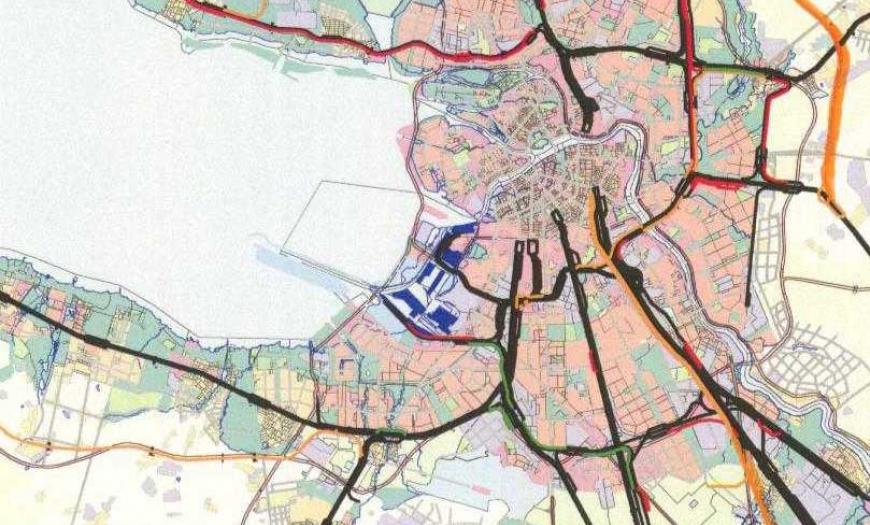For many years, Lengiprotrans has been developing a general scheme for the development of the St. Petersburg (formerly Leningrad) railway junction. In the 1950s, the institute developed a general layout of the site for a 15-year perspective (1950-1965).
In accordance with the general scheme, the long-distance and suburban train traffic was transferred to diesel and electric traction.
During this period, the sections were electrified:
• Leningrad - Zelenogorsk - Roshchino (1951-1954);
• Leningrad - Sestroretsk - Beloostrov (1952);
• Leningrad - Pavlovsk (1953);
• Leningrad - Melnichny Ruchey (1958);
• Piskarevka - Sosnovo (1958-1960);
• Leningrad - Malaya Vishera with a branch on Shapki (1960),
• Pavlovsk - Vyritsa - Settlement (1963);
• Obukhovo - Mga - Volkhovstroy (1964-1965).
Simultaneously with the electrification of the railway sections, work was carried out on the construction of new multi-unit depots at the stations Leningrad-Finlyandsky, Leningrad-Passenger-Moskovsky, Leningrad-Tovarny-Vitebsky and reconstruction of the motor car depot at the Leningrad-Passenger-Baltiysky station.
In 1962, long-distance passenger traffic on the Leningrad-Moscow highway was transferred to electric traction. This provided the prerequisites for organizing high-speed traffic (160 km / h) on the St. Petersburg - Moscow highway.
In 1960-1966, the Leningrad-Varshavsky station was reorganized in connection with the electrification of suburban traffic on the Leningrad - Gatchina-Baltiyskaya - Siverskaya section.
In 1966-1968, according to the Lengiprotrans project, the head section of Leningrad-Varshavsky-Shosseinaya was transferred to a new highway, shifted to the Baltic line, with laying through the stop points Bronevaya, Heroev Avenue (Lenin Avenue), Predportovaya, Airport, Shosseinaya.
The general scheme for the development of the railway junction was fully implemented. Thanks to this, the residents of Leningrad received an extensive network of suburban electric trains, and railway workers - new working conditions and opportunities to ensure the transportation of goods.
Author's department:
Project Status:


